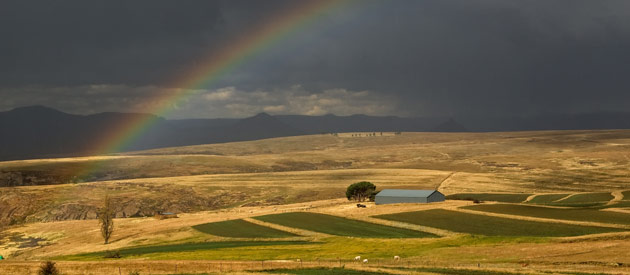On 3 July 2017, Vicky Leonard, Marketing Manager at Australia’s Arrowfield Stud, published a blog, discussing the state of the Australian horse racing industry and some of the challenges it faces. With much of the subject matter relevant to a global audience, it has been reproduced by the TDN and widely shared and discussed on social media. Vicky has kindly given permission for the Sporting Post to reproduce a copy and share in the debate.
Ask anyone in horse racing how the Australian horse racing industry is going and they would answer ‘pretty darn well’, writes Vicky Leonard.
Our prize money is relatively sustainable across all levels, our bloodstock prices are among the highest in the world and our racehorse quality is now appropriately recognised by international standards.
We have Winx, Chautauqua and a national treasure called the Melbourne Cup.
However, the startling reality is that the majority of Australians wouldn’t know that Winx is a horse – let alone what a Chautauqua is, and have a waning interest (at best) in the Melbourne Cup.
The most concerning thing? Not only are we not addressing it, those of us immersed in horse racing don’t actually realise how irrelevant the industry is, especially to young Australians.
Horse racing is my life. I spend my weekends at Randwick or Rosehill (or at the pub watching Randwick or Rosehill); my Twitter feed is filled with racing journalists, my Instagram with horse photographers and Longines, and I’ve culled any anti-racing commentators from my Facebook page.
However around nine months ago, about the time of Premier Baird’s incredible (since reverted) decision to suddenly ban Greyhound Racing in NSW, I was forced into a fairly depressing realisation.
I’m currently studying part-time and in class we were asked to discuss our jobs. Everyone was at first surprised, then very interested, when I said I work for a horse stud – not being a lawyer, engineer or project manager like the rest of my 40 classmates, it was rather exotic, especially for a 30 year old female.
At first the questions they asked seemed innocent enough, but then things got a bit heated.
‘What do you do with the slow horses?’
‘How long do you think until thoroughbred horse racing is banned like greyhound racing?’
‘ How many horses die racing each year?’
At first I was annoyed, so I went on the defensive. I couldn’t understand their ignorance.
But their questions stemmed from genuine perplexity about why I would work in such a “controversial, antiquated industry”.
My classmates, comprised of a well-educated, gender and culturally diverse mix of under-35’s, simply had little to no knowledge of horse racing. When pressed on their reasons why, it was because they had limited interaction with the sport; it rarely hit their radar. When it did, the content was so negative they didn’t like what they saw. Their perception of horse racing was that it either challenged their moral compass on social issues, or they thought it was outdated: a sport for old men in dingy pubs.
I left that class rather dejected, but still hopeful that perhaps my classmates were not representative of the typical young Australian.
So I went on a fact-finding mission.
First stop iSentia, a media monitoring company who have detailed access to traditional and social media content. iSentia completed an analysis to determine the attitude of young Australians toward horse racing, during the 2016 Spring Carnival when maximum attention was on the sport.
iSentia found that Australia’s horse racing industry is in perception crisis and its future is under threat. We’re losing our audience. Our supporter base is getting older every year, and the number of Australians who perceive racing negatively is increasing. Young Australians – up to 35 years old – either have no opinion about the sport, or if they do, it’s more likely to be negative than positive. A lot of their concerns relate to animal welfare.
- Despite being the biggest Facebook users, 18 to 34 year olds were the least engaged least on horse racing topics.
- 47.5% of horse racing social media content during the period was unfavourable in tone, while 28.7% was favourable and 23.8% neutral. In total there were 248,000 mentions of horse racing in association with animal cruelty.
- Users aged 18–24 had the highest proportion of interactions on negative posts about animal cruelty.
When Roy Morgan Research published its annual analysis of Melbourne Cup viewership and wagering, the findings were equally concerning:
- The Melbourne Cup audience has declined by 39%, almost 1 million Australians, over the last decade.
- Ten years ago, one in four Australians placed a bet on the cup; today it is one in six.
- Audience age of the Melbourne Cup flipped from majority under 50 in 2006 to a majority over 50 in 2016.
- Fewer than one-quarter (22%) of 14 – 49 year olds are ‘occasional’ Cup viewers, down from more than one-third (34%) in 2006.
Finally, a scan of NUVI Social Media Intelligence metrics revealed that in January 2017 alone, there were more than 9,495 negative mentions online in association with horse racing.
The horse racing industry hasn’t changed much over the years – if anything it has become better regulated, and there have been positive animal welfare initiatives of late. For example, Racing NSW and Racing Victoria have been proactive in their rehoming initiatives, dedicating significant resources to addressing this issue. But positive efforts like these aren’t shared with the right audiences beyond the industry choir.
Expectations of society have changed, whether we choose to accept that or not, it will guide our future progress.
Social media is killing us.
iSentia found that as an industry, we’re good at ensuring messages are favourable (or at least neutral) when they’re promoted through traditional media outlets such as newspapers, television and radio, because historically we have been able to control the narrative.
The problem is that traditional media coverage does not reach young Australians, who are unlikely to engage with it, and are sceptical about any messaging from it. Young people are most active on social media, where content is often inflammatory and not scrutinised for factual accuracy. It’s where animal welfare groups recruit ambassadors for their cause through emotionally shocking material and largely fabricated statistics.
It’s a given that our industry will be vulnerable to criticism from certain sectors of the population. We’re unlikely to convert animal rights activists into race-goers, punters or owners. But there are 10 million Australians who feel neutral about the industry – we just need to give them the right information to become supporters. Those who have a strong positive opinion of horse racing can influence their own social media communities if they’re given the right tools and information.
We need a new plan.
The horse racing industry needs to show Australians how wonderful it is.
Tell the stories of the horses, and the people who dedicate their lives lovingly tending to them. Share accurate statistics on thoroughbreds being rehomed post racing. Show the farms where the horses are raised, the high level of care and attention they are given, and explain the regulation and integrity processes that protect them. Teach people about the incredible biomechanics of the thoroughbred and how they are trained like high performance athletes.
Our goal should be to give those who are indifferent to horse racing a reason to care, and to respond well to positive messages about the sport. Negative messages are currently dominating the discussion – especially where it occurs online.
We need to work together as an industry to create a shared vision that will safeguard the future of horse racing. We must achieve nothing less than a radical shift in the perception of horse racing in modern society, and we must focus our efforts on young Australians.
If you work in the racing industry and feel as I do about the horses, the racing community and the sport, then you are sick of defending racing against fabricated statistics and slanderous innuendo. It’s time we did something proactive about it.
(Reproduced, with grateful thanks, from Vicky Leonard)















